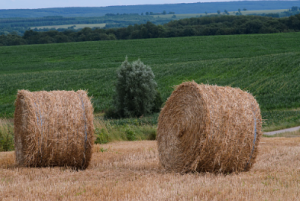Baling twine is small diameter twine made from sisal or synthetic fibre. It is used to bind fibrous materials together. It has capacities of 95 psi to 325 psi and is used to wrap and tie up goods for shipping and storage. In addition, it is used to bind hay, straw, and haylage. This article will explain the purpose of baling twine.
 Many kinds of balers use baler twine. It is commonly used to bind the ends of hay and straw. In addition, it is used for automatic knotters on balers. It was made from natural fibres like sisal and hemp in the early days. Today, it is available in a wide variety of colours, strengths, and materials. You can find the perfect colour and weight for your baler by visiting a locally-owned, independent store. Check www.netwrap.com.au/baling-twine-australia.
Many kinds of balers use baler twine. It is commonly used to bind the ends of hay and straw. In addition, it is used for automatic knotters on balers. It was made from natural fibres like sisal and hemp in the early days. Today, it is available in a wide variety of colours, strengths, and materials. You can find the perfect colour and weight for your baler by visiting a locally-owned, independent store. Check www.netwrap.com.au/baling-twine-australia.
Baling twine is useful for many purposes. It can be tied to a horse’s headcollar or a dog’s collar. In addition to being used as a lead for a horse, it can be used to create a hammock for a secluded spot on your farm. Several tutorials are available online to help you make your baling twine hammock. Whether you want a comfortable place to relax, a hammock or an easy place to tie your hay, baling twine can do all of these jobs.
Baling twine is a versatile material. It comes in many colours and is suitable for different materials and purposes. It is also available in different strengths, making it easy to find the perfect choice for your needs. The best thing about baling twine is that easy to use and has a long shelf life. It means you don’t have to worry about tangling or ripping. Instead, you can choose a colour that perfectly matches your field or paddock and get the job done with ease.
Baling twine is a vital component of a farm. It can be used for various tasks, including mend fences and tractor parts. Its primary use is for baling. There are several different weights, colours, and types of baling twine. The size of the baling twine you choose should match the type of materials you’re using. If you want to make sure that your hay is bundled properly and securely, you’ll need to choose a baling twine with a higher knot strength.
There are various colours and styles available of baling twine, and you can choose the one that works for your needs. It is available in different strengths and materials. Among them, sisal twine is the most biodegradable twine. While polypropylene twine is the most commonly used type, it is the best choice for most farmers. Besides being biodegradable, it is also available in various colours.
NetWrap have revived a recycling program for baling twine. In the spring, they collected between 8,000 and 10,000 pounds of twine. They plan to collect at least 10,000 pounds more of the stuff over the winter. In addition to the farmers, the horseback riders also accept the bales.
As a result, sisal twine has been widely used for decades as a binding material. It is a fibre from the agave plant found in the American Southwest and Central America. It was used to wrap hay securely and was considered a natural product. But since it is cheap and eco-friendly, it is now widely used in agriculture. Its benefits include versatility and cost savings. It is used to secure hay and hay. Check www.netwrap.com.au/baling-twine-australia.
Other materials like a net wrap or plastic twine make bales. The four corner horsemen are responsible for many of the trails in their region, including the Colorado Trail. They provide volunteers to pick up and recycle the twine for them. The horses will be glad to help and will continue to help out. With this effort, they hope to continue indefinitely. But some hay producers are worried about the twine rotting. For this reason, the hay should be placed indoors or in an enclosed environment to prevent the possibility of rotting.
In the past, farmers could obtain baling twine for free. Now, they have to purchase the materials to sell the bales. However, this method is not environmentally friendly. This twine has a high carbon footprint. The waste can clog the landfills and pollute the environment. In the meantime, farmers can recycle it. The leftover twine is also used for building homes and businesses. In addition, it can be recycled into different products.